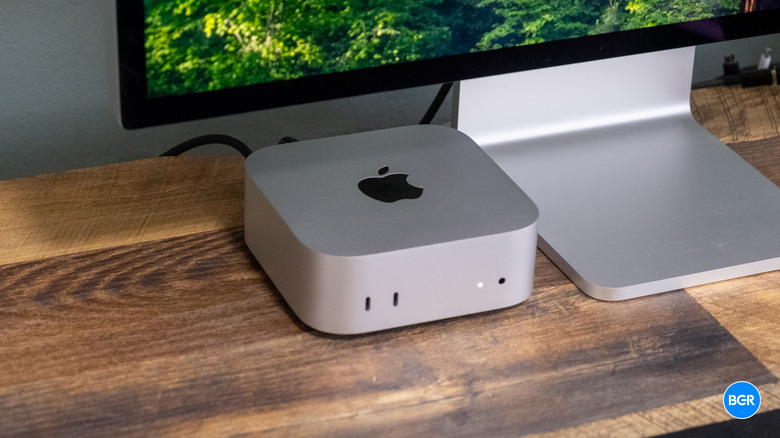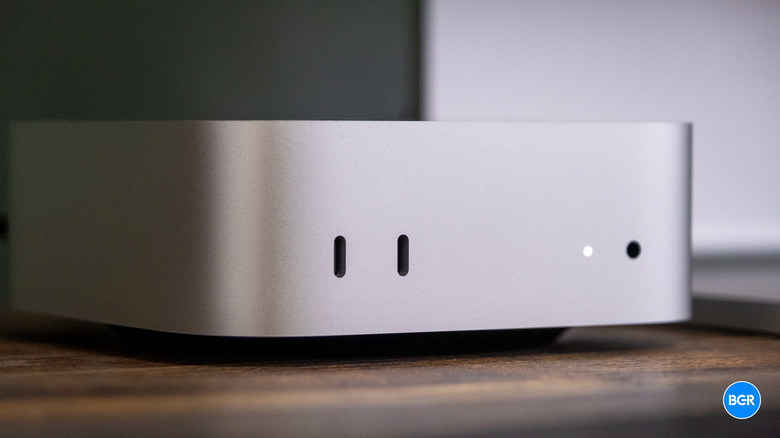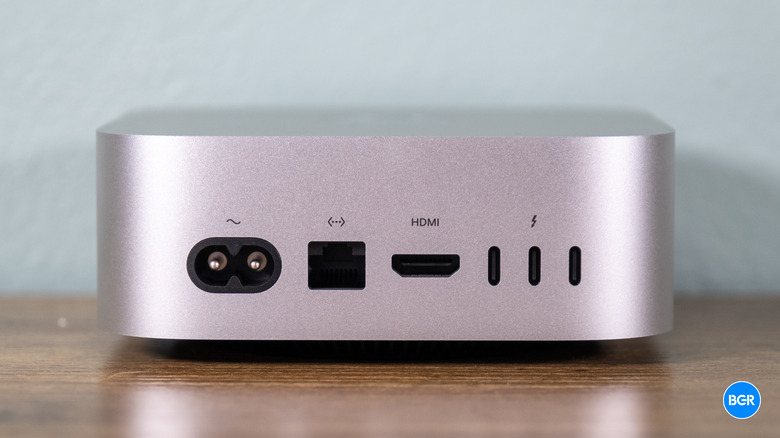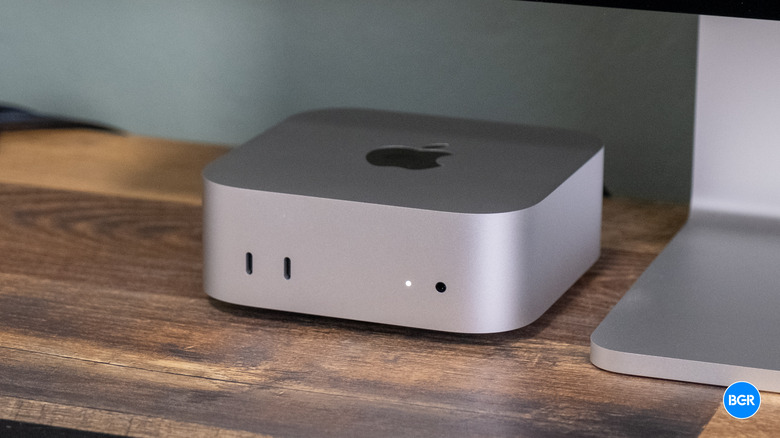Mac Mini (2024) Review: Smaller But Better
It's been a long time since the Mac Mini received a total redesign. The tiniest Mac more or less kept the same design between 2010 and now, getting some different ports and colors every now and then, but foregoing the big changes that we've come to expect from other Mac models every few years. To a certain extent, it makes sense — plenty of customers use Mac Minis in racks or other settings, and changing up the design means shaking up a whole industry of mounts and accessories. But, 13 years later, it's finally time, and alongside the addition of the M4 chip, the new Mac Mini finally has a new design.
The new design doesn't seem to mean a higher price though. The Mac Mini is still the cheapest Mac — and with the power of the M4 behind it, it's a stellar deal. In fact, I think the 2024 Mac Mini could be the best deal in computing right now, offering better performance than anything else in its price range.
Here's what makes the Mac Mini (2024) such a stellar machine.
Mac Mini (2024) specs
| Dimensions | 5.0 x 5.0 x 2.0 inches |
| Chipset | Apple M4, Apple M4 Pro |
| Memory | 16GB, 24GB, 32GB, 48GB, 64GB |
| Storage | 256GB, 512GB, 1TB, 2TB, 4TB, 8TB |
| Ports | 3x Thunderbolt 4 or Thunderbolt 5, Gigabit Ethernet or 10Gb Ethernet, HDMI, 2x USB-C, 3.5mm headphone jack |
| Colors | Silver |
| Price | $599+ |
So very mini
Easily the most interesting thing about the 2024 Mac Mini is its design. That's because it's the first redesign of the computer in many years, and while it'd be hard-pressed to say that the Mac Mini really desperately needed a redesign, the changes that Apple has made are welcome. Why? Well, the new Mac Mini is smaller than ever, and indeed, it's impressively tiny.
It has a footprint of only 5 x 5 inches, and while it is a little taller than the previous generation models at 2 inches tall, it just feels much smaller in general. It easily fits in the palm of my hand, and it's very easy to put in a bag or backpack. Seriously, the new Mac Mini could easily disappear on your desk, and considering its size, it should be very easy to place off desk, too.
Apple has made a somewhat controversial change to the Mac Mini design by placing the power button on the bottom of the computer. For some, this won't be a big issue. There are plenty of people who simply always keep their computer on and restart it through software when needed. Others are slightly more old school and might turn their computer off every night, meaning they'll need to hit that power button in the morning when they get to their desk. How much you care will likely depend on which type of user you are. Personally, I'm the former. It's pretty rare that I need to use the physical power button on a Mac Mini, except, perhaps, in the event of a power outage. In those rare occasions, it's not a big deal to lift the Mac Mini slightly to hit the button on the bottom.
One design element I do wish was different, though, is the color. Apple's approach to color has been getting a little more consistent over the past few years. Its consumer-focused models are colorful and vibrant, while its so-called "pro" devices are built to be sleek and professional-looking. I certainly wish those pro devices were colorful too, but at least the consistency is there. That said, even on the pro devices, there are at least a few options, such as Silver and Space Black on the MacBook Pro. The Mac Mini, on the other hand, is only available in silver. I think it would have been super cool to see a green Mac Mini, but even without vibrant colors like that, I at least wish a Space Gray or Space Black model was available. It's really not a huge deal, especially considering how small the Mac Mini is — but colorful options would have been nice.
Mac Mini (2024) ports
Perhaps the only limitation associated with building a smaller machine is that there's not as much room for ports. Thankfully, the port selection on the Mac Mini is still pretty good, and Apple has made one change that will significantly impact day-to-day use. For the 2024 Mac Mini, there are ports on the front, making it easier to access them when needed for devices and peripherals that don't always need to be plugged in.
The ports do vary slightly depending on which Mac Mini model you get. On the back of the computer are three USB-C ports, which support Thunderbolt 4 on the M4 Mac Mini and Thunderbolt 5 on the M4 Pro. That's alongside an HDMI port and a gigabit Ethernet port that can be upgraded to 10-gigabit Ethernet.
No matter which model you get, the front of the Mac Mini features two USB-C ports, which unfortunately only support USB 3 speeds. Most of the time, this won't be a big deal, as you'll probably use them for things like charging or basic peripherals. However, since these are likely the ports you'll use for file transfers from devices like external hard drives, faster ports might have been helpful. That said, I'm just happy there are front-facing ports on the Mac Mini.
Last but not least, the front also includes a headphone jack. This is a decision some might love and others might hate. For use with actual headphones, it's great that the jack is front-facing. But if you plan to use your Mac Mini with speakers, a rear-facing port would likely be more convenient. Ultimately, I think this was the right move by Apple, as it's easier to have a permanently installed adapter or dongle on the back of the device rather than having to use one every time you plug in a pair of headphones.
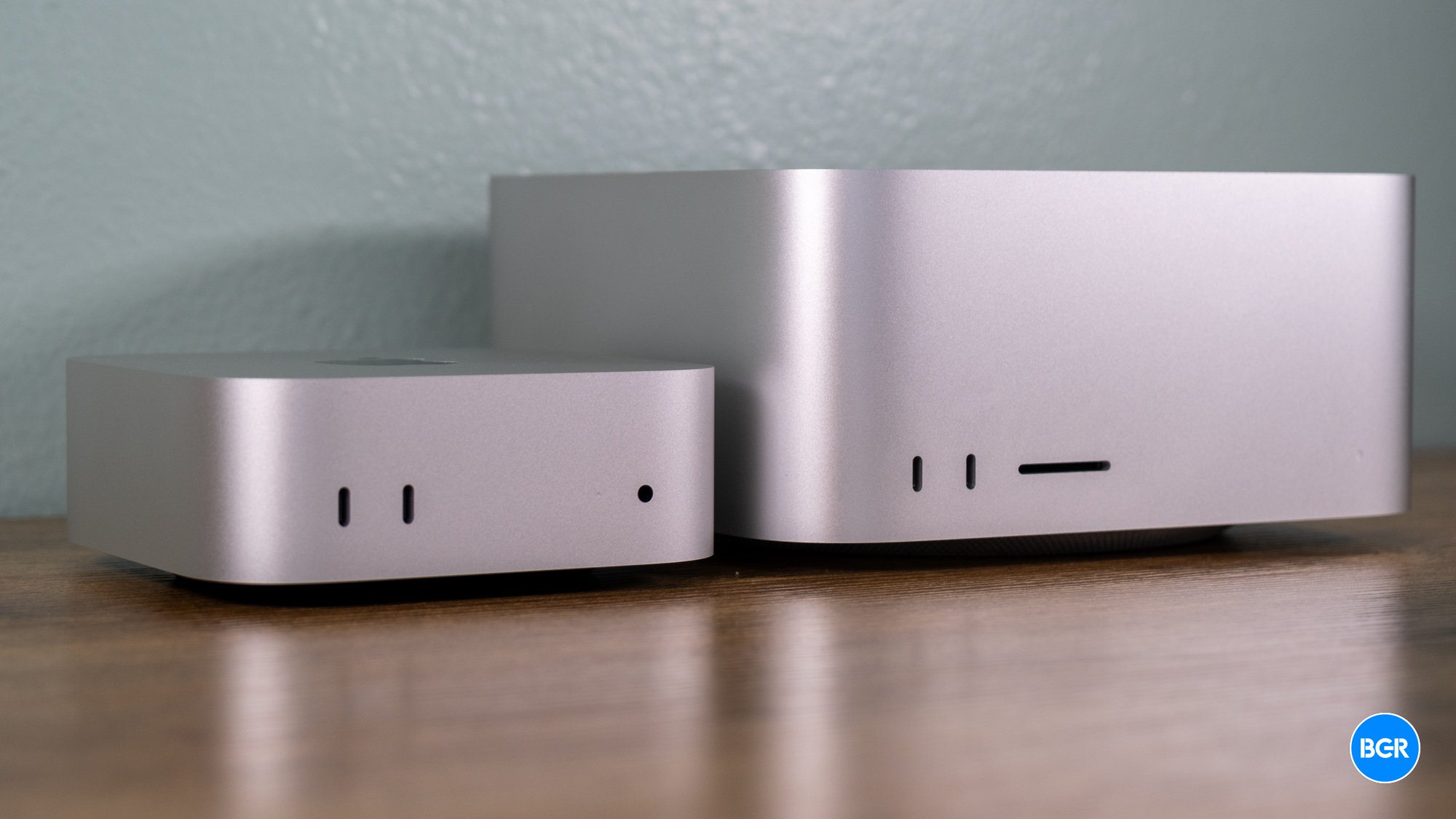
Of course, notably missing from the Mac Mini are USB-A ports. But honestly, who didn't see this coming? Other Apple computers haven't had USB-A for some time, except for the Mac Studio, which I expect might get rid of them in the next generation as well. Regardless, if you need USB-A, you'll have to use a hub or adapter with the 2024 Mac Mini.
All in all, the port selection on the new Mac Mini is pretty good, especially considering the size of the computer. Sure, more ports are always nice, and if Apple had included more Thunderbolt ports on the back, it might have been helpful. Personally, I use almost all of the ports on my Mac Studio at all times, so when testing the Mac Mini, I had to use hubs for some peripherals. That's not a huge deal, though, and there are plenty of affordable USB hubs that can expand the port selection if needed.
Huge performance for the price
The thing that really stands out to me about the 2024 Mac Mini is its performance. That's not unexpected. We already knew how the M4 chip performs, considering we've had an iPad with one for some time now. But the Mac Mini is even cheaper than that iPad. And frankly, it blows anything else in its price range out of the water.
Just a note, the review Mac Mini I'm testing does not have the M4; it has the M4 Pro, which you'll have to pay extra for. However, I did test an M4 iMac and found it to perform excellently. That level of performance in a computer priced like the Mac Mini, to me, is astounding.
The M4 is more than good enough for all productivity use cases, including browser-based apps, web processing, and emails. However, more demanding users, like graphic designers or video editors who need better GPU performance, will likely want to upgrade to a higher-performance chip, such as the M4 Pro. The Mac Mini does not support the M4 Max, so if you want that chip, you're currently limited to the MacBook Pro, as Apple hasn't refreshed the Mac Studio yet.
The base model of the Mac Mini comes with the M4 chip, featuring a 10-core CPU and a 10-core GPU. The next step up is the M4 Pro, which has a 12-core CPU and a 16-core GPU. However, there's also an option to upgrade to a 14-core CPU and a 20-core GPU in the M4 Pro, which is the model we have.
The computer offers between 16GB and 64GB of RAM, and our review model is equipped with 48GB. It also has a 10-gigabit Ethernet connection, although we primarily used the Mac Mini through Wi-Fi.
I do wish the base model's storage was a little higher though. 256GB is a little low, and 512GB in the base model would have been nice. It's not a big deal, especially for those who use cloud storage a lot, but even the iMac has 512GB in the base model.
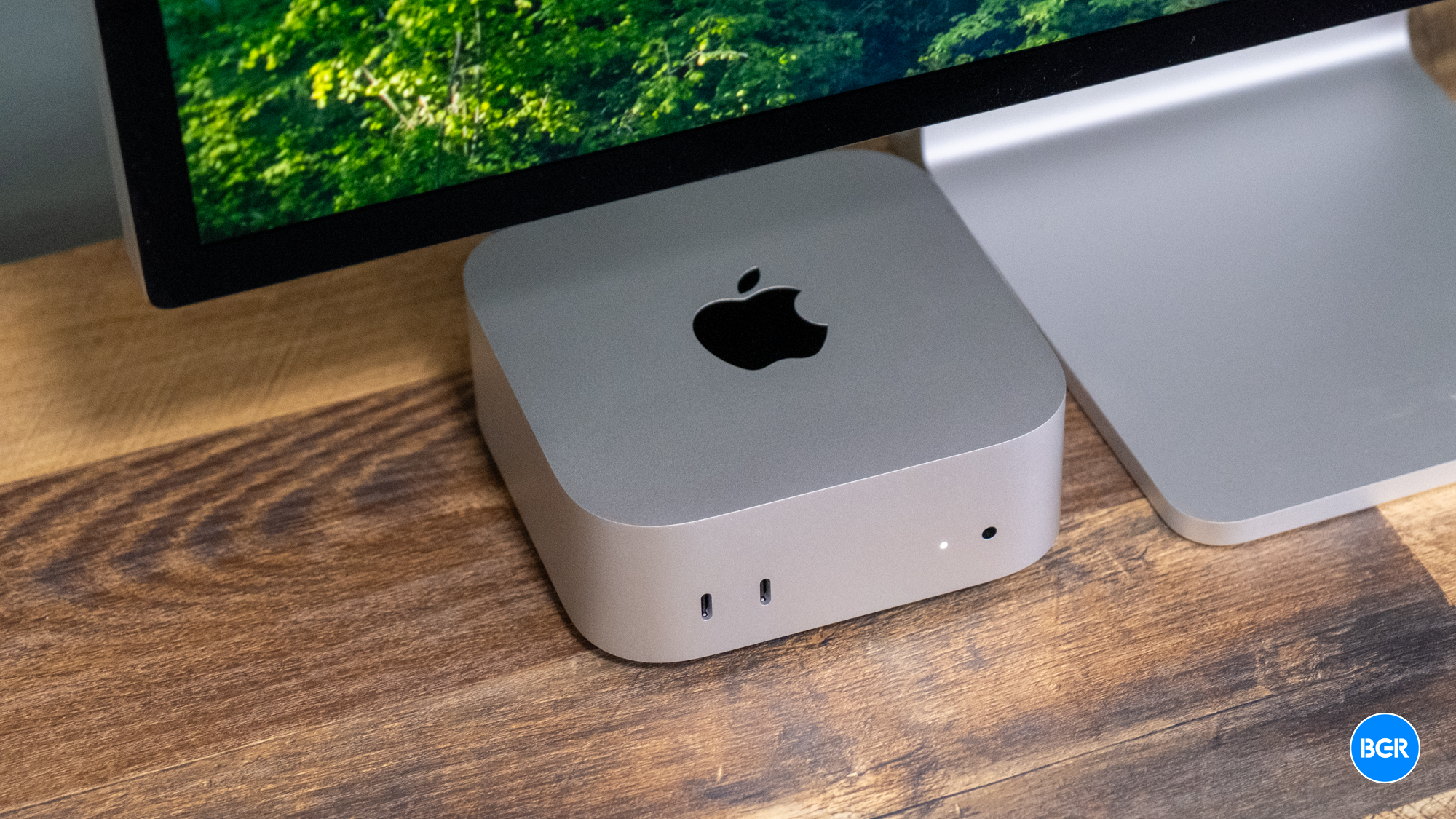
So, how does the Mac Mini we tested—the best-performing Mac Mini you can get—perform? Extremely well. It handled productivity use cases with ease. My writing and reviewing workflow, which includes some photo editing in Adobe Lightroom, was snappy and quick, and I never experienced any stuttering or lag.
I also feel confident speaking to the base model Mac Mini, given that I tested the iMac and iPad Pro with similar results. Use cases like mine are more than handled by the M4 chip, and I think that will be true of the vast majority of users. Even those who use their computer for lighter photo editing and some creative tasks are likely to find that the M4 is fine for their needs.
Conclusions
The new Mac Mini is an incredible machine, and again, the best computer deal going right now. If you have $600 to spend on a desktop computer, and don't mind providing or buying your own monitor, keyboard, and mouse, the Mac Mini is easily the way to go. Those that don't want the hassle of providing peripherals should still consider the iMac, but keep in mind that you'll pay more than double to get it.
The competition
If you're in the market for the Mac Mini, you may be considering it against other Apple desktop computers. The iMac and Mac Studio are both great machines, but even the iMac is double the price of the Mac Mini. The Mac Mini, put simply, is the best desktop computer under $1,000 right now, for most users who aren't gamers.
Should you buy the Mac Mini (2024)?
Yes. It's an excellent computer at a very compelling price.
